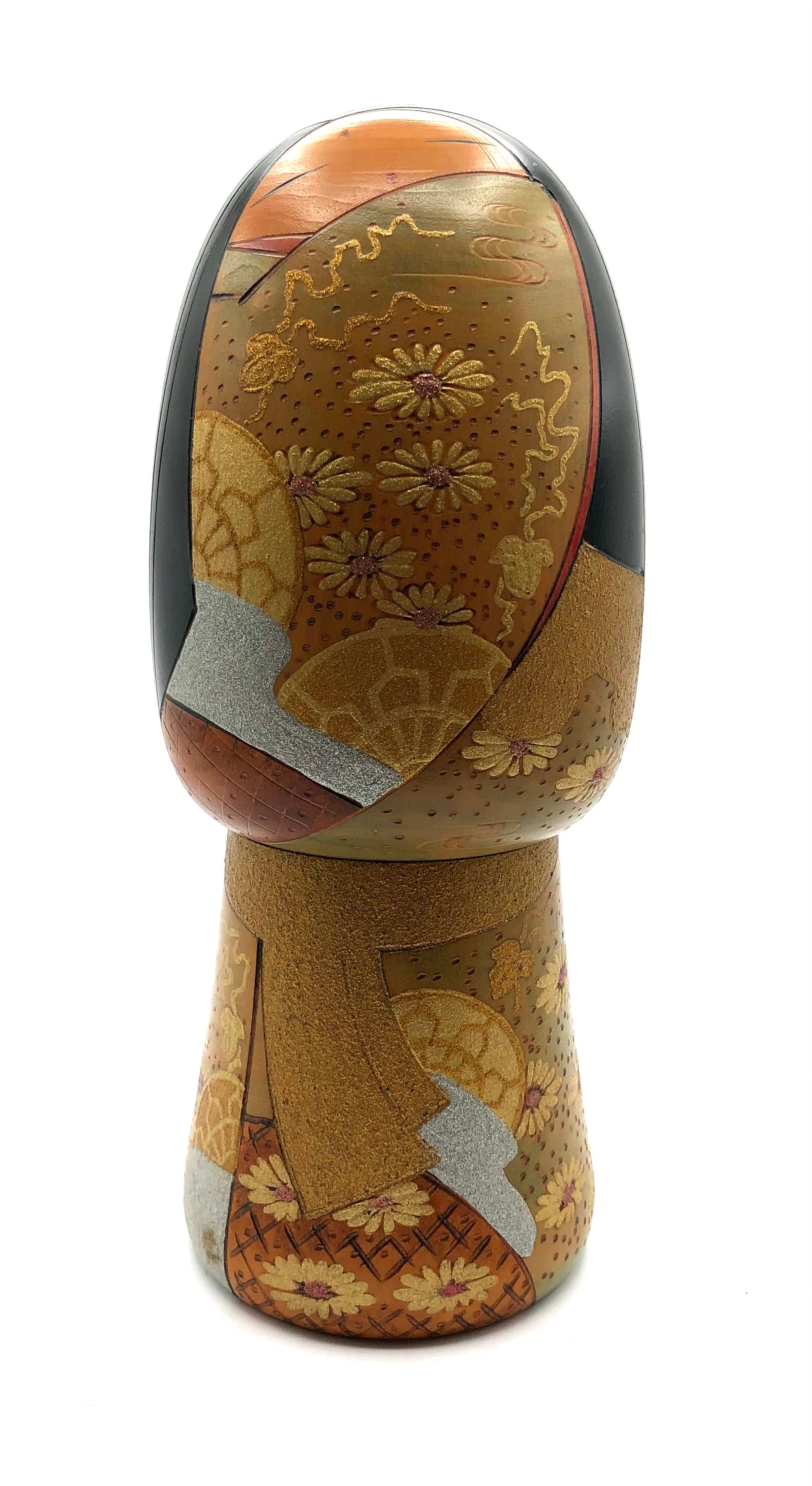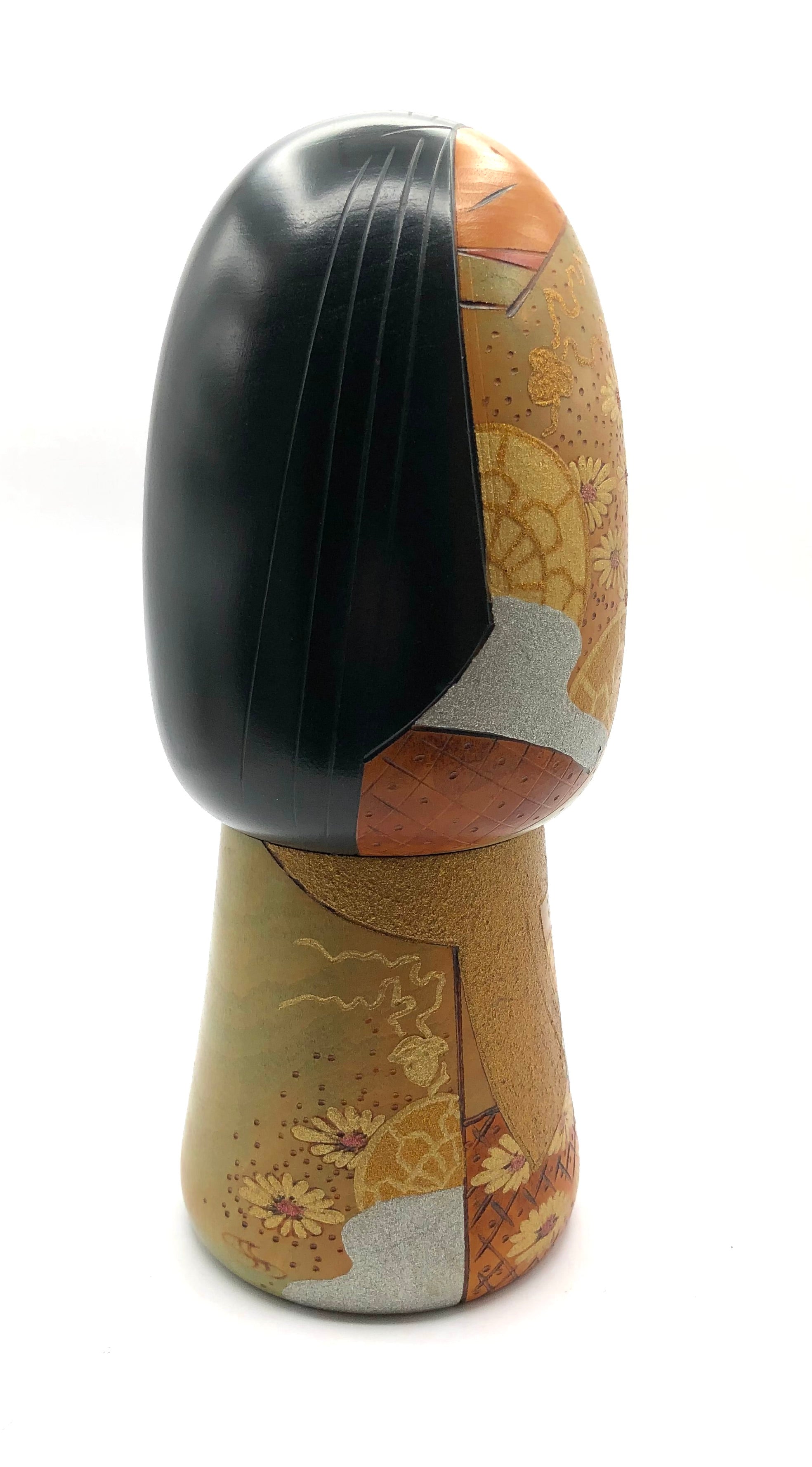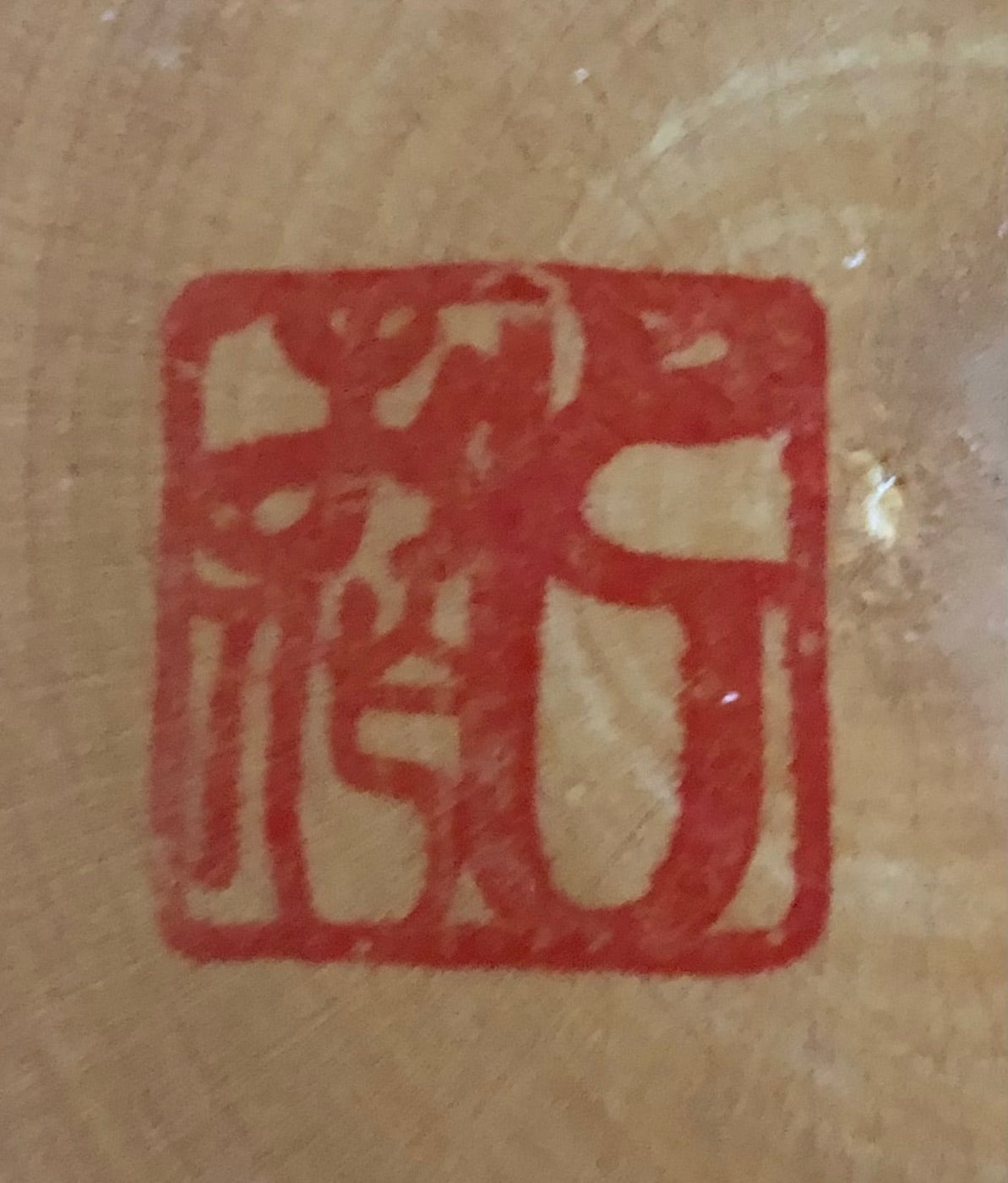


Vintage Sosaku Kokeshi entitled: “Natsu.no.hi | Summer Day” by Sekiguchi, Toshio (1947-)
Dimensions: 13-0’h
Toshio-san demonstrates an artistic, painterly, ability with beautiful details, as seen in this extraordinary design which is extremely detailed and colorful, and one of his rarest dolls. Toshio-san was born in Gunma Prefecture, was awarded the Craft Council Award in 1990, and was recognized by the National Exhibition of Modern Kokeshi Award winners for his extraordinary forms and surface treatments
The Kokeshi is beautifully painted and is made of one piece of Mizuki, (Dogwood). Numerous motifs are used in this festival Kimono, including abstracted chrysanthemum flowers, clouds, and details of textile motifs, all painted in gold tones, and silver outlined in red vermillion. This particular piece has simulated long, carved black hair, inspired by the Heian period, and is in both flat and relief carving that affords the doll a wonderful, textural quality, as does the simulated Kimono. The eyes have a meditative and serene expression, with a small red mouth. On the bottom of the doll is his impressed stamp, documenting the maker.
The piece was published in the 2022 publication of Sosaku Kokeshi: Celebrating the Major Artists of the Creative Movement. For more information on this artist go to the following link:https://mingeiarts.com/collections/artisan-woodworker-sekiguchi-toshio-1947.
Condition: Superb, outstandingly excellent, impressive, and beautiful. Photos cannot capture the exceptional work performed by the creation of this doll. No chips, cracks, breaks, missing pieces, or restoration, and retains its original details and finish. The piece meets all the standards of the vintage collectible Sosaku Kokeshi by Sekiguchi, Tashio.

Artisan
Woodworker: Sekiguchi, Toshio
1947-
Biographical History:
Little has been published about Toshio-san but we know that he was born in Gunma Prefecture in 1947, Toshio is not related to Sekiguchi, Sansaku, and his family. He won the Craft Council Award for his extraordinary forms. Beyond this information, nothing else has been written about this artist. As collectors, we felt it was most important to represent all Sosaku Kokeshi artists, whether or not each artist has a written account of his/her life. We show the diversity of cultural values and the creative work produced by a multitude of artists.
In researching old writings through articles and books that remain, it is evident that the Kokeshi Craftsperson not only created beautiful forms as toys, but also kept alive cultural values, customs, and fashion through the extensive representations of Kokeshi dolls. The beauty is in the doll and not the signatures, for most masters never signed their dolls. Later they named the dolls, but only when Westerners insisted on signatures because they did not know the artists, so the carvers began to sign their works, for the carvers wanted to promote sales to make a living, during the seasons that did not provide an environment to continue their otherwise daily work.
Collector's note – descriptive qualities, standard characteristics & ornamentation styles:
Toshio’s piece featured in the center of the associated images is entitled, “Natsu.no.hi”, (Summer Day), is a beatifully painted doll of Mizuki (Dogwood). Numerous motifs are used in this and other dolls, including natural elements such as walnut sections, abstracted chrysanthemum flowers, and details of textiles. All are executed in natural woods, gold, silver and black. Additionally shown are several lathe-turned dolls turned from one piece of natural light oak incorporating a beautiful, carved transition between the neck of the figure and the Kimono. These dolls are finished with a clear candle wax (Rosoku no ro), with traditional features shown on the face and a girlish ‘bob” hairstyle. The only decorative element is the affixed, natural, and dark walnut sections on the front of his garment, contrasting the smooth surfaces of the doll. Most of his dolls display traditional hairstyles and hairpieces if at all. Toshio demonstrates artistic, painterly abilities with beautiful details throughout a variety of creations and sizes.
Explore & Learn More about Woodworker: Sekiguchi, Toshio